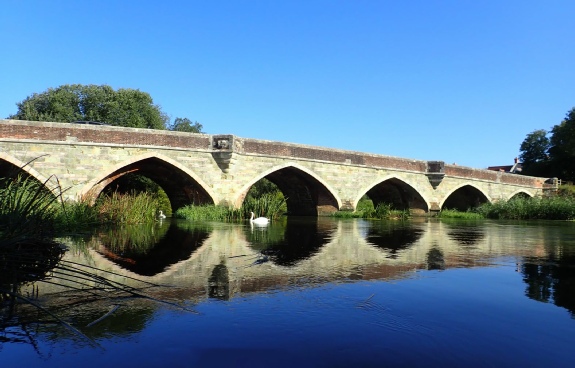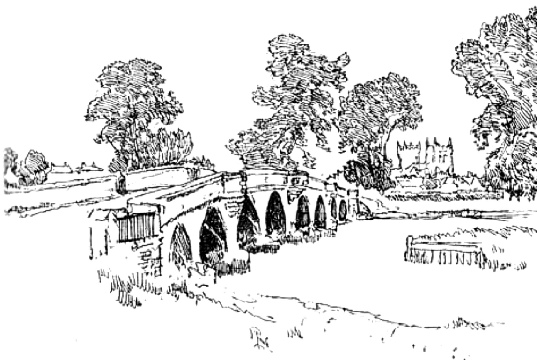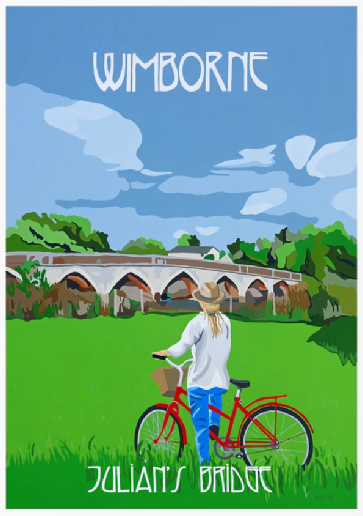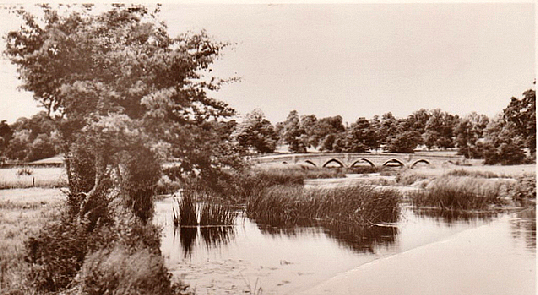History Trail





 Town Map
Town Map
Tree Trail



///cakes.mercy.broadens
Wimborne certainly benefited form the arrival of the railways in 1847 -
a thriving market town for many years since early medieval times. The crossing
point here over the River Stour has hosted a bridge since before the current structure was
built in 1636. In the years since, the traffic along the route has changed from carts to carriages -
In his writings (1535-
none of which includes the recent addition of an apostrophe! As the bridge has not been associated with a Julian this seems to have been added with the advent of social media
and a misunderstanding that the name should have that unnecessary addition.
Sadly even the Ordnance Survey maps have followed that trend in the 21st Century -
eroding the historical accuracy.
In those early years of the 19th century it seems that the County employed individuals
on a bridge-
hiring a rowing boat or canoe from Dreamboats] . He appears to have been dismissed at some stage, though when is not clear, and Dorset county seems to have reverted to its old practices
of employing people in an ad hoc way. (https://www.childokeford.org/hayward-
There is a reference to our bridge in research of repairs In 1821 …
This was associated with repairs to Hayward Bridge at Child Okeford …
[ Hayward Bridge -
called Lady Hayward Charity using funds from ‘certain Lands and Tenements’ in the adjoining Parishes ] So it is likely the bridge in Wimborne was repaired by the same method -
using funds from wealthy local benefactors.
“Thomas Woolfrey got £3 [£172] for repairing tools used at the bridge whilst Robert West
was paid 18s 6d [£53] for “work done and performed and materials used in repairing the Wheelbarrows of and belonging to the County” together with another £91 [£5k] for
erecting a post and railing fence.
Some material remained after the building of the bridge and William Melmoth
was paid a pound to take some of it to the Julian Bridge at Wimborne and
two pounds to take the remainder to Kings Mill Bridge at Sturminster. [White Mill Bridge?)
Finally £9 [£500] was paid to the Clerk of the Peace Thomas Fox “for respiting [sic]
and discharging the Indictment of Hayward Bridge”.
So, to look at the list of names that the bridge has been known by there are :
Juliane bridge 1535–43
(in the writings of John Leland (He was the representative for Henry VIII
at the time of the dissolution of the monasteries)
Jelian bridge 1591
Gilian bridge 1593
Julian Bridge 1822
Julien Bridge 1869
& Julian Bridge
And just downstream of the bridge you can’t have failed to see a distinct small
tree-
This is known as Julian Island and may be the reason we have a Julian(s) Bridge at all.
In the records of the Almshouses (only 400 metres away across what would then
have just been watermeadows there is note of a witness -
wealthy local family; Walter Julien. He was a witness in a deed concerning St Margaret 's Almshouses in Pamphill. As most bridges were maintained -
Since a bridge here originated as a structure in the 1400s or earlier -
crossed a bridge in the early 1500s -
it may therefore be quite reasonable to relate the family name of Julien to the original provision of a bridge here (and its maintenance) with them maybe owning land along the river
and possibly properties within and around Wimborne town.
.

Wimborne -











Dorset artist : Richard Watkin

1961
